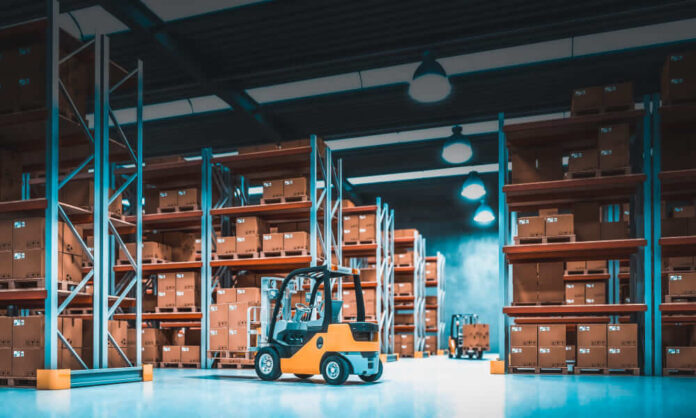In today’s fast-paced world, online shopping is more than just a trend – it’s a way of life. This means if you’re in the retail business, adapting to e-commerce is no longer optional; it’s essential.
Getting your warehouse ready for e-commerce doesn’t have to be complicated. Think of it like setting up your home for a special occasion. With the right tools, strategies, and mindset, you can streamline your operations and ensure a seamless shopping experience for your customers.
So, before those orders start flooding in, here are some essentials you need to get your warehouse ready for online demands.
E-Commerce Warehouse Essentials
#1: Essential Equipment
The backbone of any efficient warehouse lies in its equipment. Adjustable shelving units are vital because they offer the flexibility to store products of various sizes, allowing you to adapt to changing inventory needs.
Likewise, ergonomic trolleys and carts ensure swift movement within aisles, facilitating quicker pick-and-pack operations. Also, dedicated packaging stations, well-equipped with all necessary strapping and packing equipment, streamline the order fulfillment process, ensuring products are safely packed for their journey to the customer.
#2: Space & Path Optimization
The layout of your warehouse significantly impacts its overall efficiency. It’s crucial to design clear pathways that minimize cross-traffic, thereby reducing potential accidents or slowdowns.
This layout should be dynamic, accommodating changes based on seasonal product demands or the rise of a new best-seller. When you are able to effectively optimize the space and paths in your warehouse, you can ensure a smooth flow of goods from shelves to shipping docks.
#3: Automation
As e-commerce continues to grow, automating certain warehouse functions becomes a valuable asset. Robotics, for instance, can take over repetitive tasks such as picking and restocking.
Additionally, automated conveyor systems can significantly speed up the movement of products within the warehouse, reducing manual handling and its associated errors.
#4: Reverse Logistics Process Optimization
Returns are an inevitable part of e-commerce. An efficient warehouse will have a streamlined process to manage returns. This involves having designated zones for returned products where they can be inspected, repackaged, or discarded.
A systematic reverse logistics process ensures customer refunds or exchanges are handled swiftly, enhancing customer satisfaction.
Before you start receiving heavy orders and probably many return requests, you should get your warehouse prepared for this. So, have an effective, systemic reverse logistic process on the ground to handle returns.
#5: Cluster-Picking Strategy
Efficiency in product retrieval is crucial. Cluster-picking involves grouping similar items or items frequently bought together. That means instead of your employees going back and forth to pick 20 of the same item individually, they can just pick them all at once.
Think of it like shopping for a party. Even when you need different items to get the party to meet up with your plan, you won’t have to visit the store multiple times when you can just get all the bottles of wine, steaks, etc. at once.
Employing this in your warehouse, too, will mean pickers can collect multiple items in a single pass, reducing their travel time and expediting the order fulfillment process.
#6: Invest in the Right Technology
Technological tools play a pivotal role in modern warehousing. Barcode scanners and RFID systems provide accurate tracking, ensuring inventory levels are always up-to-date. Meanwhile, handheld devices can guide staff through optimized picking routes, ensuring that the right products are retrieved every time.
You may want to search for the right technology for your warehouse and invest in them. Choose the ones that best align with your needs, and they will help streamline operations in your warehouse down the line.
#7: Implement Slot Optimization
The location of a product within a warehouse can drastically influence retrieval times. By placing fast-moving items in easily accessible locations, you reduce the time spent on each order. This strategy requires periodic review, and adjusting product placements based on changing sales patterns and product popularity.
#8: Upgrade to a WMS
A WMS (Warehouse Management System) is more than just a tracking tool – it’s the brain of your warehouse. It offers detailed insights into product movements, storage optimization, and even forecasting.
However, not all WMS systems are created the same. That means when shopping for the right WMS for your warehouse, you will need to take several factors into consideration. Important among them is ensuring that the WMS you choose can integrate well with your existing technology and enhance managing specific e-commerce tasks and problems.
#9: Implement Warehouse Guidelines
Beyond equipment and technology, the human element remains central to warehouse operations. That is where warehouse guidelines come into play. You want to make sure that all your employees are aware of these guidelines and how they can make operations easier and safer at your warehouse.
So, invest in regular training to make sure your staff understands best practices in handling, storage, and safety. Setting clear protocols for any anomalies – be it damaged goods, stock discrepancies, or emergencies – can also help ensure that every challenge is met with a systematic, effective response.
Final Note
Preparing a warehouse for the e-commerce world is no small feat, but with the right strategies and tools in place, it becomes a seamless transition.
Take advantage of these essentials we have mentioned in this post, and you will soon discover how easy it can be to meet the unique challenges e-commerce presents. Remember, a well-optimized warehouse ensures that businesses can deliver on their promises, leading to satisfied customers and sustained growth. You don’t want to joke with that!
















